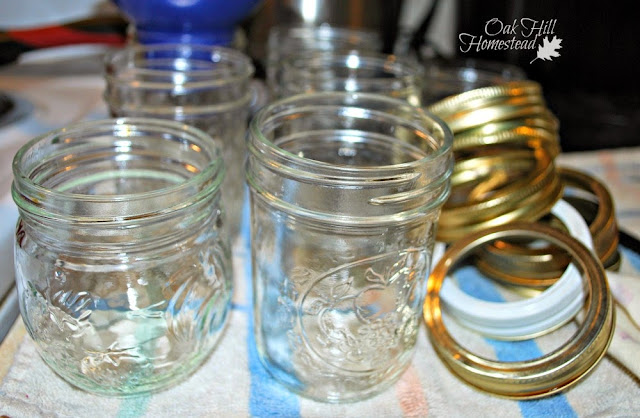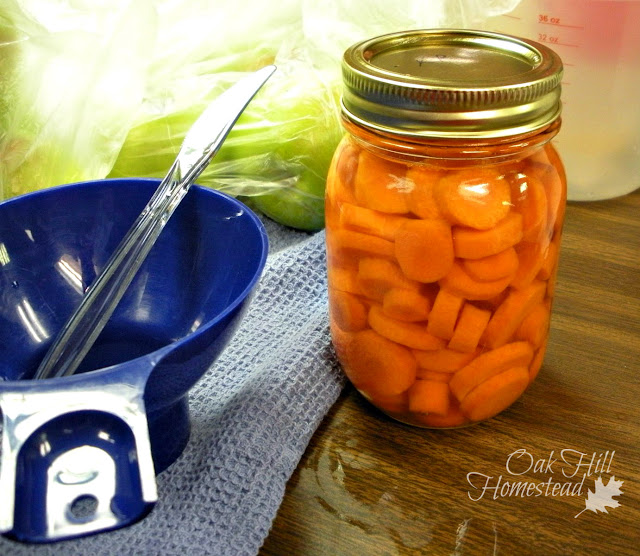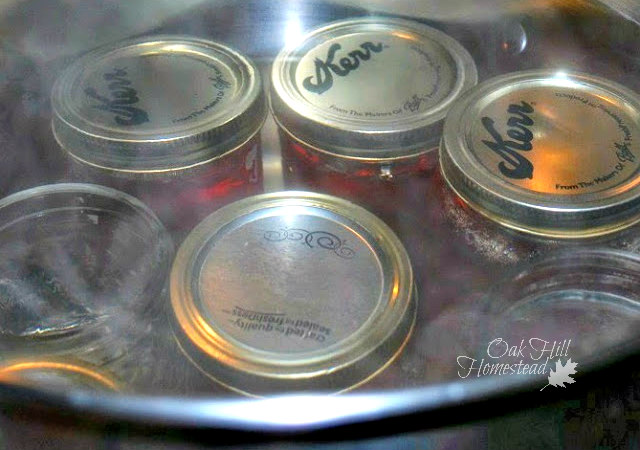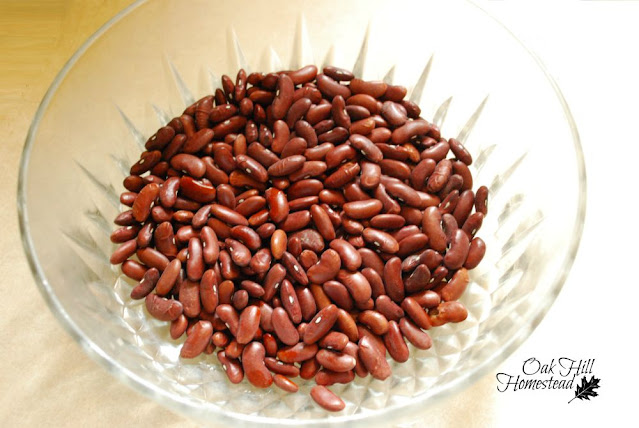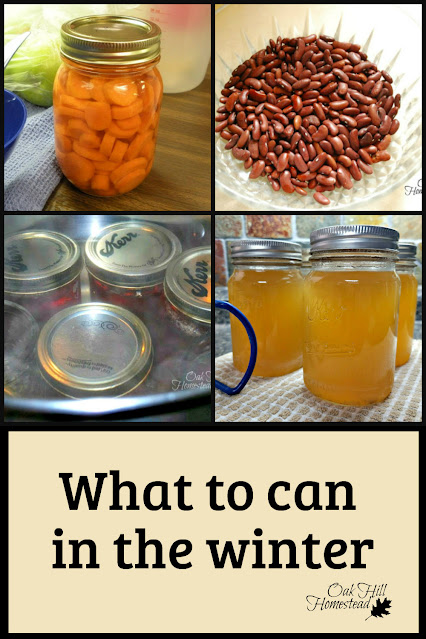You don't need to put your canning equipment away just because the growing season is over. There are still many foods you can preserve, even in the winter.
These suggestions are sure to keep you busy, even after the farmers markets have shut down and you've put your garden to bed for the winter.
What to can in the winter
When August hits, my house is way too hot to do any more canning. That's right when the garden explodes with delicious, ripe produce, and I'm too hot and too overwhelmed to do more than process the foods that MUST be dealt with immediately.
Eventually I end up tossing the rest of the ripe, whole tomatoes into gallon-size freezer bags and stuffing them in the freezer until winter.
This post contains affiliate links. For more information please read my disclaimer here.
In winter, the house is chilly and the warmth generated by a water bath or pressure canner is very welcome.
I'm less overwhelmed, and because I have less work to do outside, I have more time to spend on indoor projects such as preserving foods.
Read on for suggestions of foods you can home can over the winter.
Foods you can water bath can in the winter
Fruits - including tomatoes - are high-acid foods and can be safely water bath canned, according to the USDA.
The latest recommendations for tomatoes, however, suggest adding lemon juice to each jar to increase the acidity. Modern hybrid varieties of tomatoes contain lower acid than in the past.
Anything else, such as vegetables and meat, must be pressure canned. There's just no way around that, only pressure canning can eliminate the pathogens that can be present in low-acid foods.
Here are my favorite high-acid foods to water bath can in the winter.
Tomatoes
At the end of tomato season, I wash the huge number of ripe tomatoes, cut out the core, and stuff them in freezer bags to be frozen until later.
When winter arrives, I remove the bags from the freezer, submerge the tomatoes in a sink of warm water for a few minutes, and the peels slip right off with no work at all!
Honestly, even in the early summer when I'm canning the first of the tomato harvest, I freeze the tomatoes first. It's so much easier to peel frozen tomatoes!
You don't have to blanch the tomatoes, then chill them, and then fight to get the peels off.
You can turn those frozen tomatoes into tomato sauce, spaghetti sauce, stewed tomatoes and more in the winter.
You'll find directions in this post about canning tomatoes, no matter what variety or kind you're growing.
Berries
Berry varieties don't all ripen at the same time, so by the time winter arrives I have bags of several different types of berries in the freezer.
Blueberries, strawberries, raspberries and blackberries can easily be turned into jelly and jam in the winter.
Whether it's blackberry jam or fruit scrap jelly, it's easy to dump the bags of fruit into the kettle and cook them down to make jelly or jam and then can it.
It's also the best time to make jam from several different kinds of berries, such as triple berry jam.
Pears
Winter pears such as d'Anjou, Bosc and Forelle are perfect projects to can in winter.
You can store winter pears for later preserving by placing them in perforated paper bags in a cool basement or garage, or in the crisper drawer of your refrigerator if there's enough room.
When you're ready to water bath can the pears, move them to a location with a temperature of about 65-75° (room temperature), where they'll soften up in about a week.
To ripen pears faster, put them in a paper bag with a couple of bananas or avocados. The ethylene gas given off by the other fruit will ripen the pears more quickly.
Learn how to water bath pears here.
Apples
Apples are another fall fruit that is easily stored until you're ready to can them. Store apples in a cool, dry place between 35-40°. Don't let them freeze!
Learn how to can sliced apples here.
If you make applesauce in the fall, you can freeze the apple peels and cores until winter, then use them to make Harvest Apple Jelly.
Foods to pressure can in the winter
Vegetables and meat are low in acid and must be pressure-canned.
Carrots
Carrots store well in damp sand over the winter, or in your refrigerator if you have enough room.
But they are simple to pressure can too, and having homecanned carrots on your pantry shelves will let you get a meal on the table in much less time.
Here's how to pressure can carrots.
Beets
Relatively quick to grow in a fall garden, beets are easy to pressure can in the winter for a delicious side dish, such as these sweet and sour beets with a silky-smooth sauce. If you haven't tried these yet, you're in for a treat!
Broth and stock
Chicken stock and broth are so easy to make. Just think, food from something that you would dispose of after a meal!
Save the carcass from your next roast chicken, or from your holiday turkey to make turkey stock, which can be used interchangeably with chicken stock any time of the year.
Here's how to pressure can poultry stock and broth.
Chicken and turkey meat
When the holiday is over and you still have turkey leftovers but can't talk your family into eating turkey even one more time, you can pressure can the meat and stock.
Here's how to can already-cooked chicken (and turkey).
Ground beef
Ground beef can also be canned, and frees up a lot of freezer space.
This has worked well for us when we buy a steer to be butchered. A large percentage of the beef is ground and takes up a lot of space in the freezer.
Venison
Fall and early winter are deer-hunting season, so canning venison is another excellent winter canning project. Here's how to can venison.
Chili
Mason jars of chili are quick and easy to heat up for lunch or for dinner on hectic nights, so why not make a big batch and pressure can some?
Soup
Home-canned soups are another time-saver in the kitchen. Vegetable based or broth based soups are best for canning.
You'll find canning recipes for soups and other dishes in the Ball Blue Book Guide to Preserving.
Special notes regarding canning soups: Soups that contain noodles or potatoes should be canned before adding those ingredients. Add the potatoes or noodles when you open the jar and heat the soup for dinner.
Creamed soups should not be home-canned, and thickening agents such as flour or cornstarch should not be added to the soup until you're ready to heat and serve it. [Source]
Dried beans
Canning dried beans means you have ready-to-use beans on your shelves and they're so much less expensive than buying canned beans from the grocery store.
You'll put in the work to can a pound of dried beans all at once, instead of having to soak and cook dried beans for hours every time you want to serve them.
Dried beans are easy to store in your preparedness pantry, but after a few years they get hard and no matter how long you cook them, they just don't soften up.
However, you can store those dried beans on your shelves for two years and then can them, which will give them additional storage life.
You don't have to stop canning food just because gardening season is over. Take advantage of winter vegetables, frozen fruit, homemade broth, and sales on dry beans to fill your pantry with Mason jars of delicious food.
For more simple-living and homesteading posts, subscribe to The Acorn, Oak Hill Homestead's weekly newsletter, and follow me on Facebook, Instagram and Pinterest. I'd love to see you there!
Related Posts:
How to Preserve Fruits, Vegetables and More to Fill Your Pantry
Canning Tips and Tricks
Frugal Canning
~~~~~
My hope is to inspire you, and to encourage your homesteading plans and your dreams of a simple, self-reliant, God-dependent life. You can follow me at:
Instagram | Facebook | Pinterest | Subscribe

